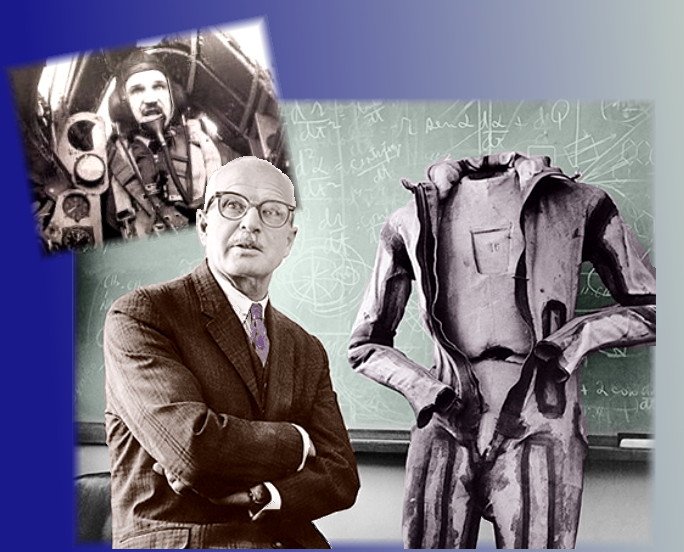Working Under Pressure
On March 4, 1901, Dr. Wilbur Rounding Franks was born. This Canadian scientist and cancer researcher developed anti-gravity devices in the 1940s with his colleagues at the Banting and Best Medical Research Institute at the University of Toronto.
The first devices Dr. Franks developed were suits designed to counteract the effects of high gravity or G forces on pilots who flew unpressurized aircraft. British Hurricane and Spitfire fighter pilots used the first version, a partial pressure suit of fitted pants made with rubber and water-filled pads that helped to restrict blood pooling in the legs. Canadian and American air force pilots tested the fuller suit, chest, abdomen, and pants fitted in a similar fashion but pressing firmly onto abdomen and legs during even greater acceleration and height, to reduce the rapid drain of blood away from the brain that causes blackouts, and, at the same time, keeping the blood from pooling in the lower body.
Dr. Franks, who had never flown before, physically tested the G-suit at every stage of its development. He sat through his very first flight ever in his test G-suit and watched as his pilot blacked out because the pilot wasn’t wearing one! Dr. Banting and Dr. Franks decided it was too risky to continue testing the G-suit in aircraft. Used to lab equipment that accelerated test tubes around a fixed axis, Franks helped develop a centrifuge that not only tested the suits and its modifications, it also tested the pilots! Pilots who had slow recovery or low tolerance for gravity stresses were transferred from pilot training. The tests on the G-suits led Franks to a third version used by the Royal Navy air arm. Although it could be inflated by air, the water worked automatically under pressure, pressing in on the pilot to support body and arterial systems and prevent blood pooling.

Honours Dr. Franks received for his saving of fighter pilot lives include an OBE from Britain and the Legion of Merit from the United States Armed Forces. From the Aerospace Medical Association he received the Theodore C. Lyster Award for outstanding achievement in aerospace medicine and the Eric Liljencrantz Award for his research into the problems of acceleration. Astronauts, cosmonauts, and air force pilots the world over continue to wear G-Suits based on Frank’s original designs.